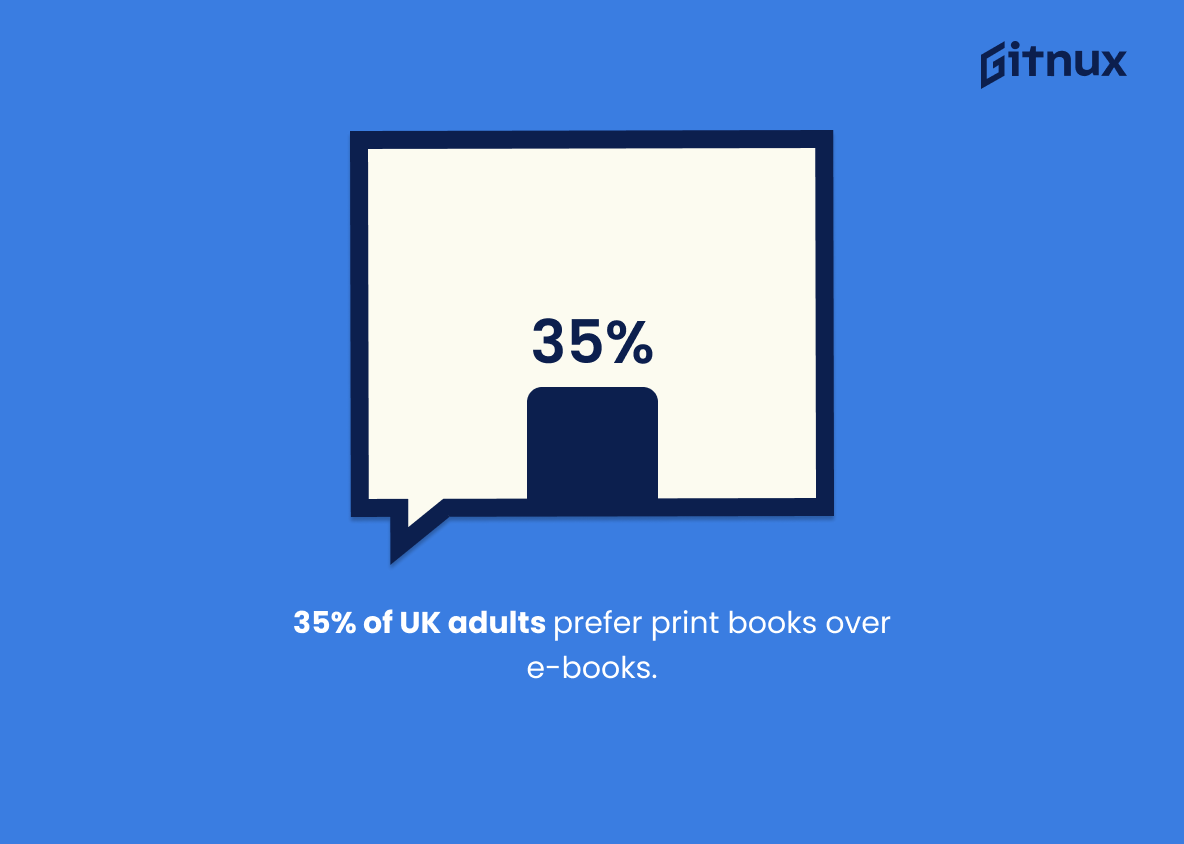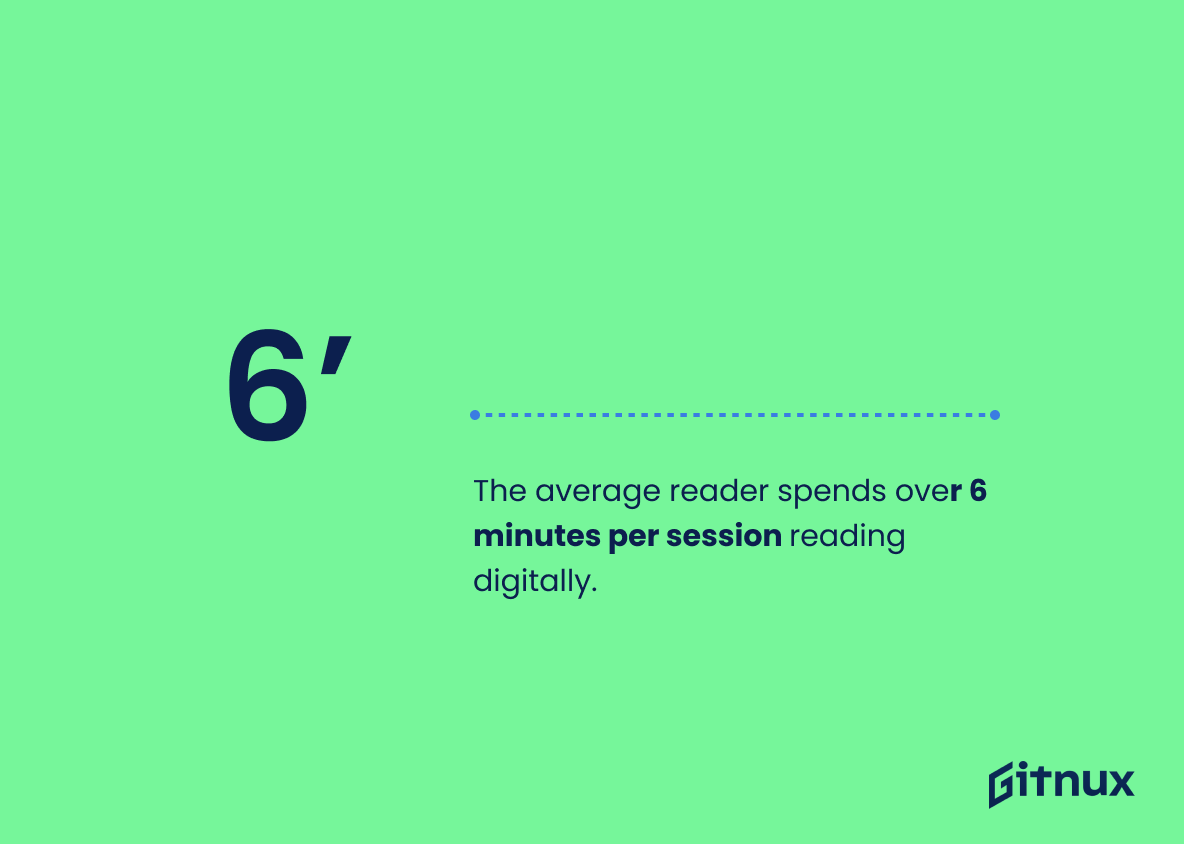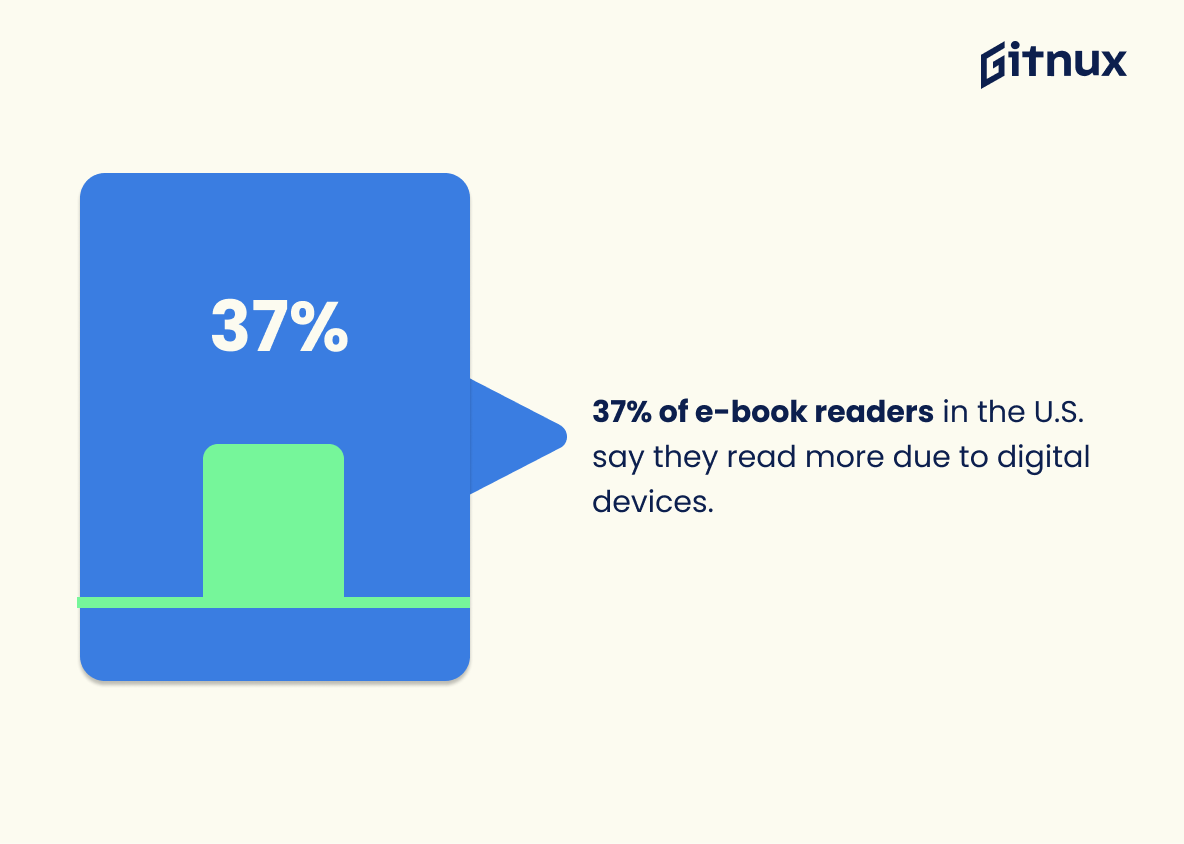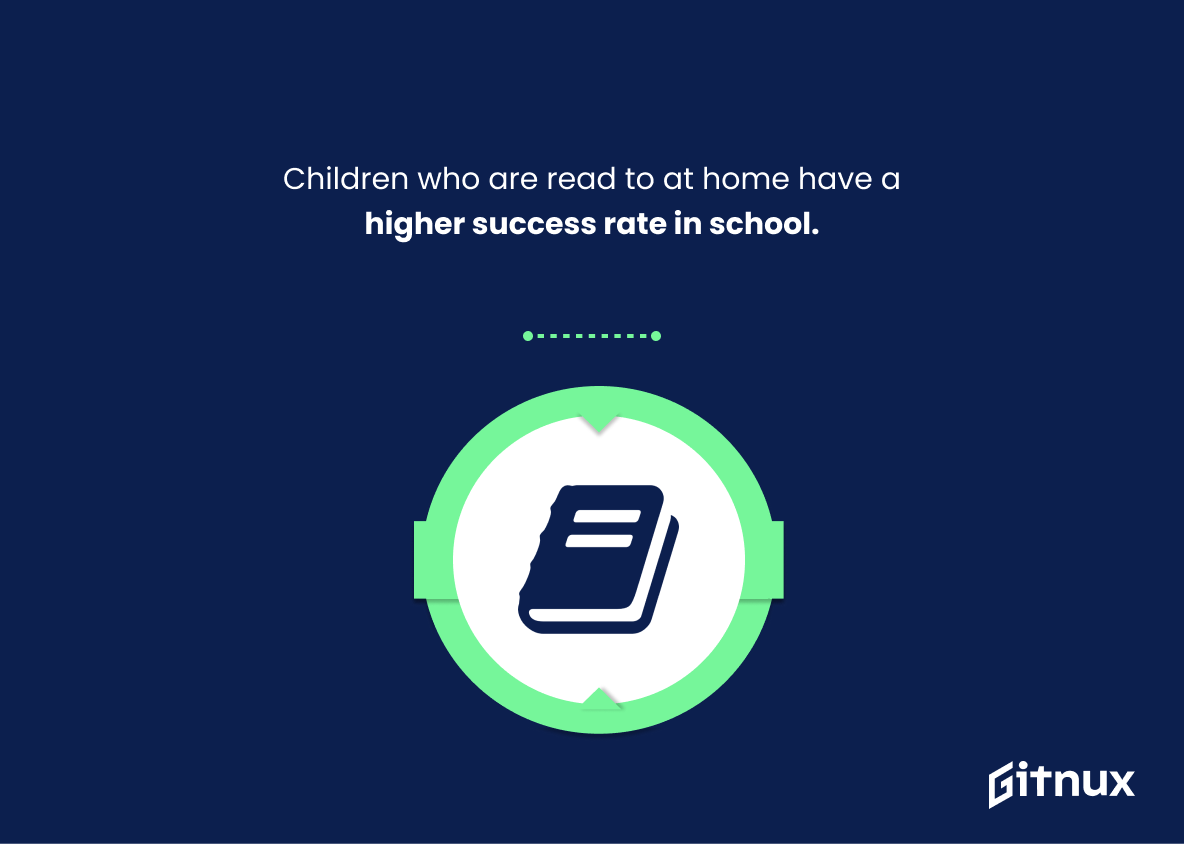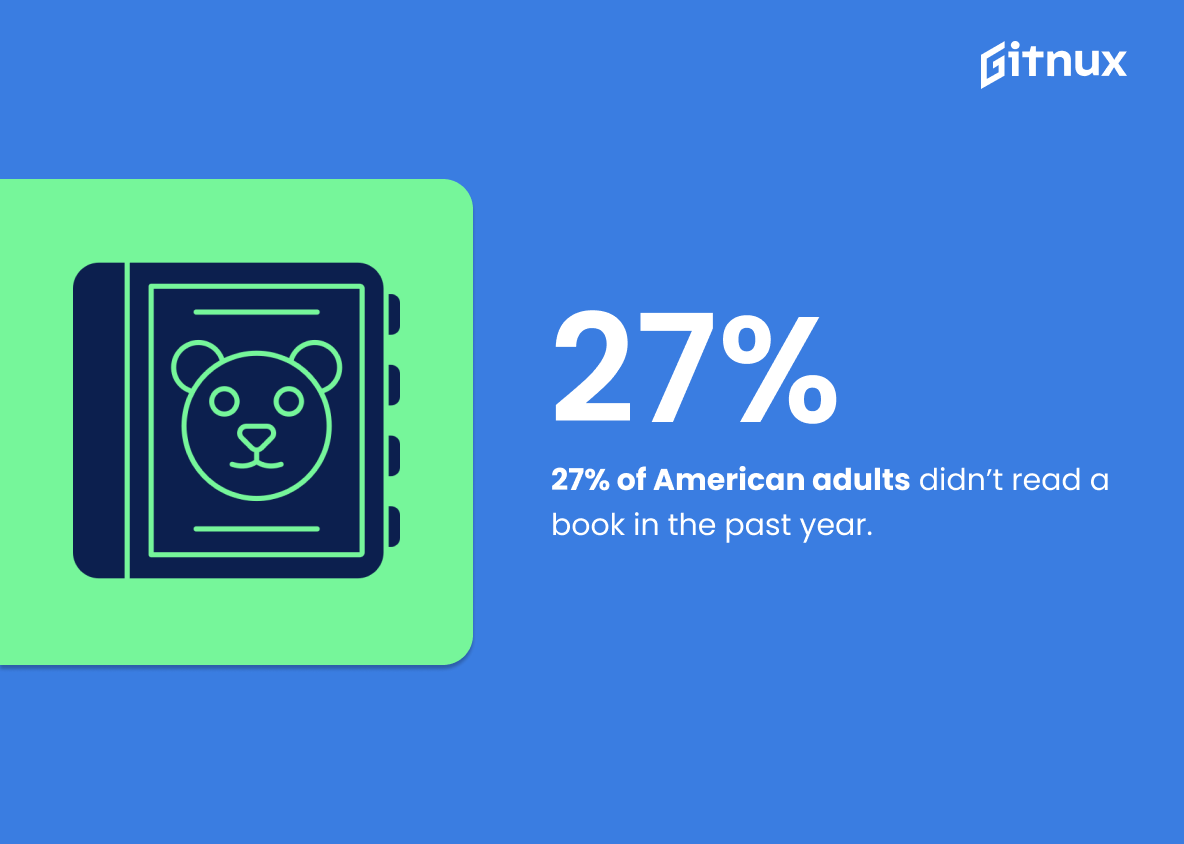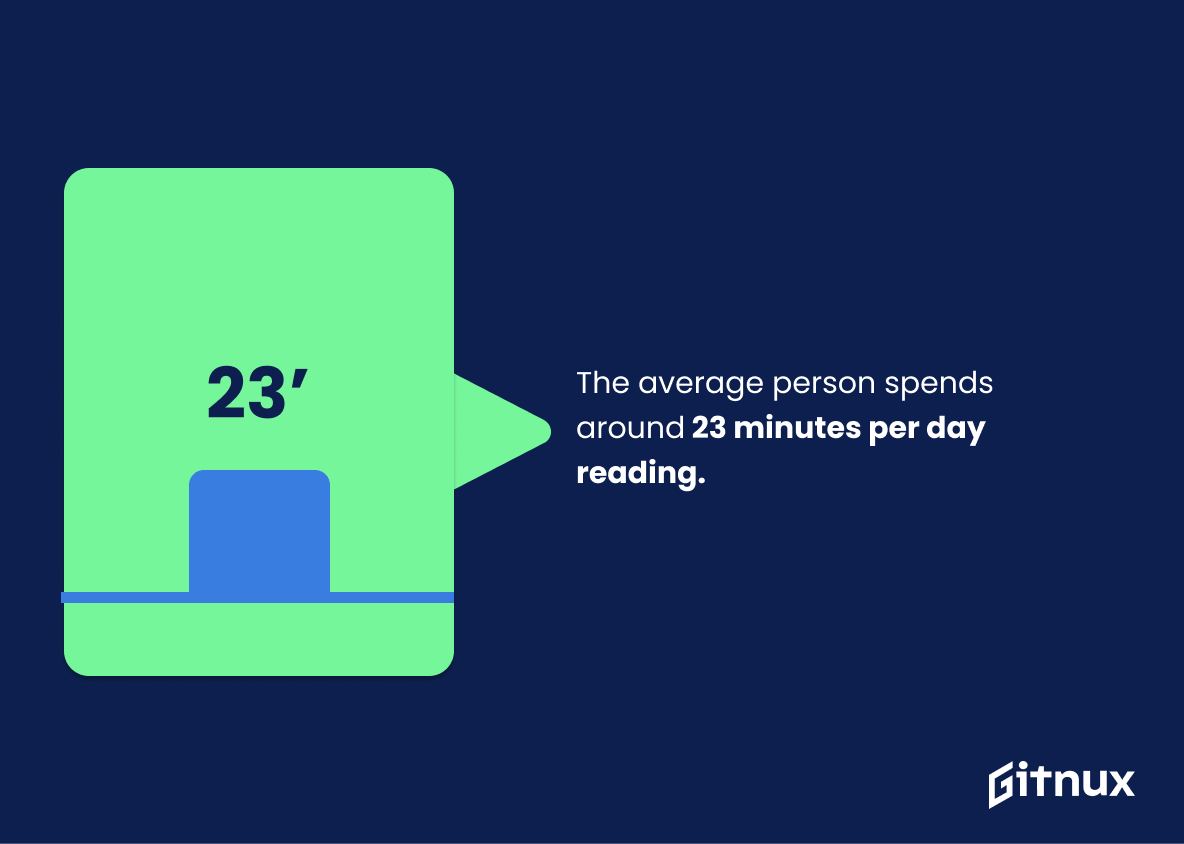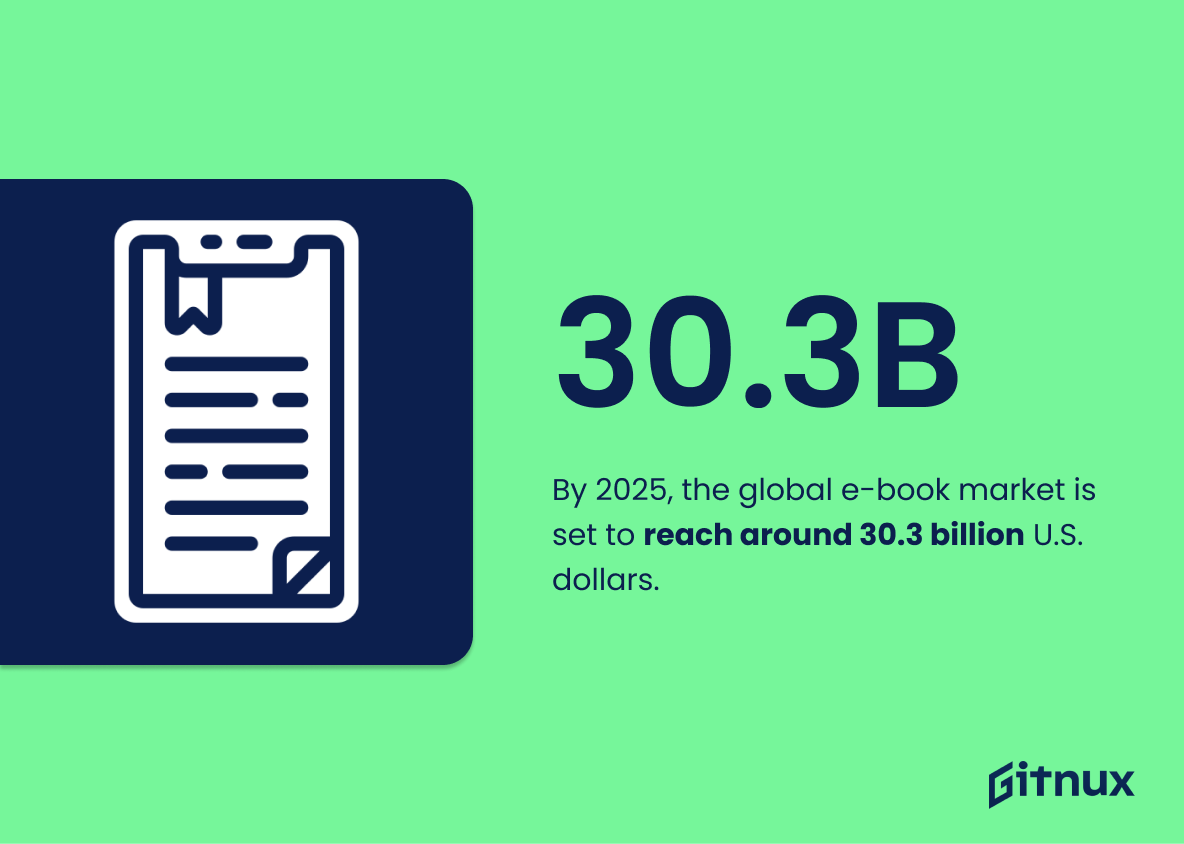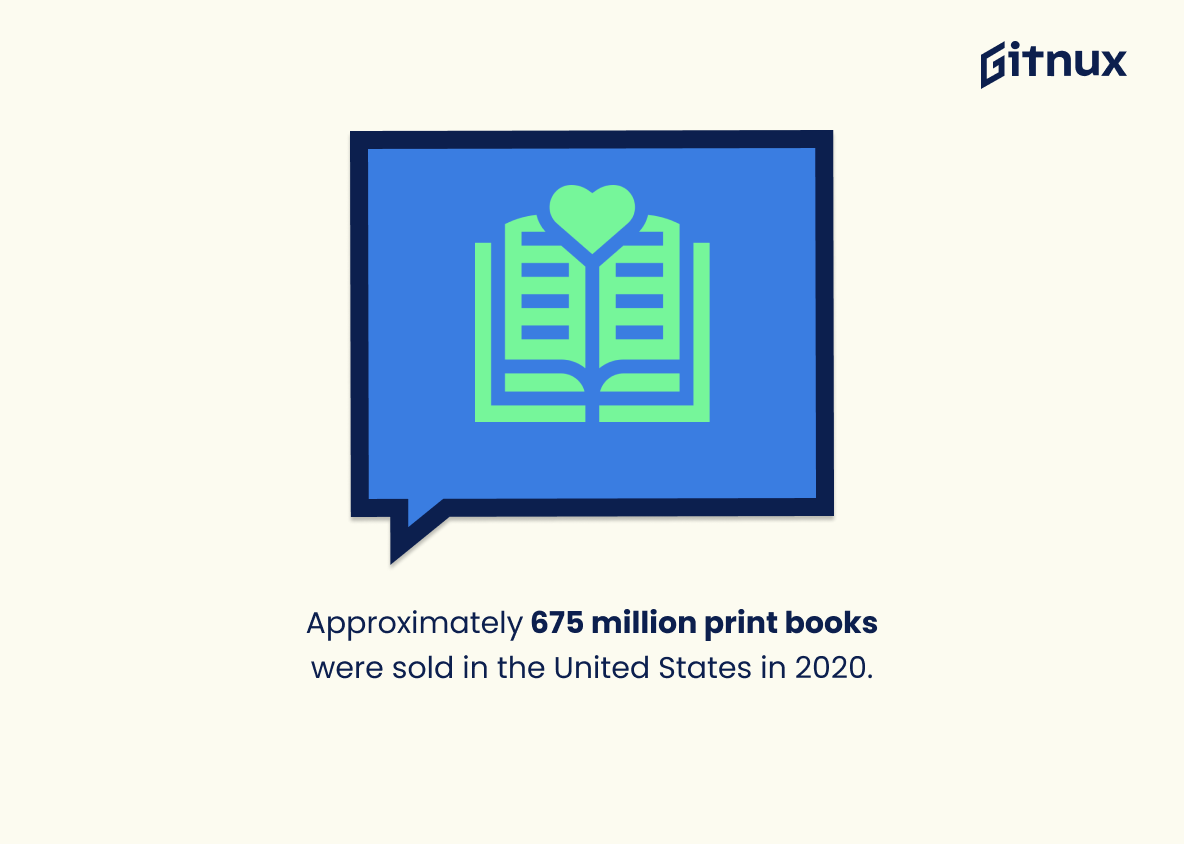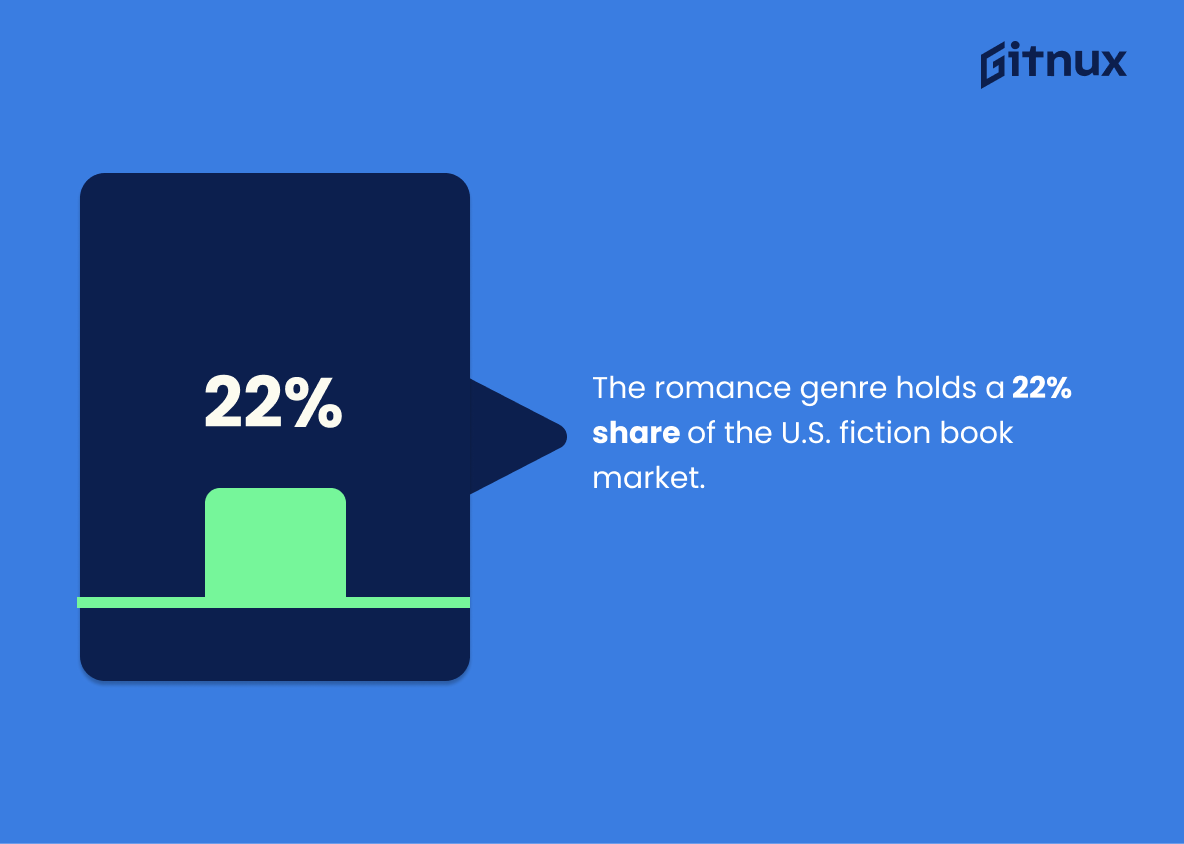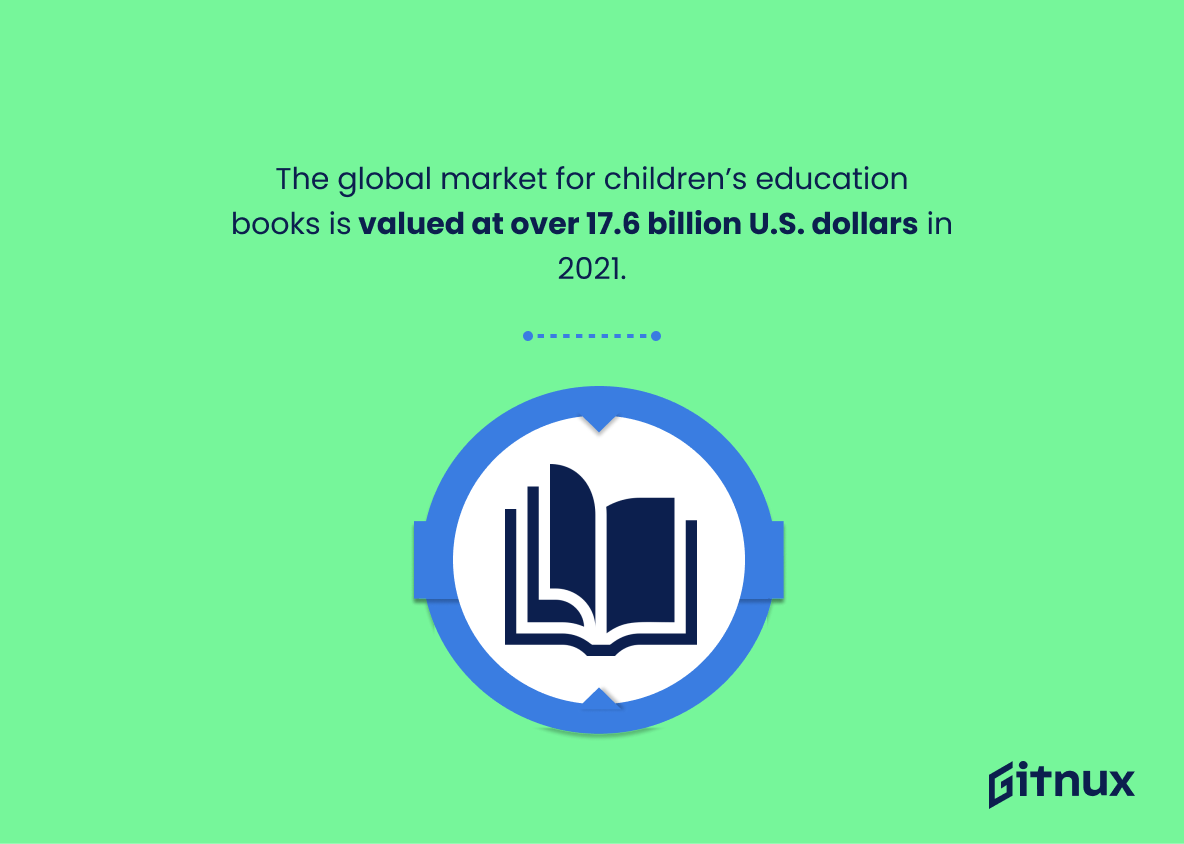Book reading is an activity that has been enjoyed by people of all ages for centuries. It’s no surprise then, that the statistics surrounding book reading are fascinating and varied. From the percentage of adults who have read a book in the past year to how much time readers spend per session digitally, this blog post will explore 20 different statistics about books and their readers from around the world.
This statistic is a testament to the fact that book reading is still a popular pastime among the adult American population. It shows that despite the rise of digital media, people still find joy in reading books. This statistic is also important in understanding the reading habits of Americans and can be used to inform decisions about book publishing, marketing, and distribution.
56% of US adults own an e-book reader.
This statistic is significant in the context of book reading statistics as it indicates the growing trend of people turning to digital devices to read books. It shows that more and more people are embracing the convenience of e-book readers, which can store hundreds of books in a single device. This shift in reading habits is likely to have a major impact on the publishing industry, as well as the way people access and consume books.
Book Reading Statistics Overview
Women are 51% more likely than men to have completed a book in the past year.
This statistic is a telling indication of the gender gap in book reading. It suggests that women are more likely to engage in reading than men, which could be due to a variety of factors such as access to books, cultural norms, or even the types of books that are available. This statistic is important to consider when discussing book reading statistics, as it highlights the need for further research into the gender gap in book reading.
35% of UK adults prefer print books over e-books.
This statistic is significant in the context of book reading statistics as it highlights the fact that a large proportion of UK adults still prefer traditional print books over e-books. This indicates that print books are still a popular choice for many readers, and that the digital revolution has not completely taken over the book industry.
The average reader spends over 6 minutes per session reading digitally.
This statistic is a telling indication of the power of digital reading. It shows that readers are increasingly turning to digital platforms to access books, and that they are spending a significant amount of time doing so. This is a clear sign that digital reading is becoming an increasingly popular way to access books, and that readers are engaging with digital content in a meaningful way. This is an important statistic to consider when discussing book reading statistics, as it shows that digital reading is becoming an increasingly important part of the book reading landscape.
37% of e-book readers in the U.S. say they read more due to digital devices.
This statistic is significant in the context of book reading statistics because it demonstrates the impact that digital devices have had on the reading habits of people in the United States. It shows that digital devices have enabled more people to access books and have encouraged them to read more. This is an important insight into how technology is changing the way people consume literature.
Children who are read to at home have a higher success rate in school.
This statistic is of paramount importance when it comes to book reading statistics, as it highlights the positive impact that reading to children at home can have on their academic success. It serves as a reminder that reading to children is not only a fun and enjoyable activity, but also an important part of their educational development. By reading to children, parents can help to foster a love of reading and provide them with the skills and knowledge they need to succeed in school.
27% of American adults didn’t read a book in the past year.
This statistic is a stark reminder of the importance of reading and the impact it can have on our lives. It highlights the fact that a large portion of the population is missing out on the benefits of reading, such as improved communication skills, increased knowledge, and enhanced creativity. It also serves as a call to action for those who are not reading to start doing so, as it can have a positive effect on their lives.
Audiobooks make up 13% of the publishing industry’s total sales.
This statistic is significant in the context of book reading statistics as it highlights the growing popularity of audiobooks. It shows that audiobooks are becoming an increasingly popular way to consume literature, and that the publishing industry is taking notice. This indicates that audiobooks are becoming a viable option for readers, and that the industry is adapting to meet the needs of its customers.
In 2021, there were an estimated 2.49 billion books sold worldwide.
This statistic is a testament to the enduring power of books. It shows that despite the rise of digital media, books remain a popular form of entertainment and education. This statistic is a reminder that books are still a major part of our culture and that they continue to be a source of knowledge and pleasure for people around the world.
The average person spends around 23 minutes per day reading.
This statistic is a telling indication of the importance of reading in our daily lives. It shows that, despite the many distractions of modern life, people still make time to read. This is a testament to the power of books and the joy they bring to readers. It also serves as a reminder that reading is an activity that should be encouraged and celebrated.
The percentage of people who read literature fell from 47% in 1982 to 36% in 2015.
This statistic is a stark reminder of the decline in book reading over the past three decades. It highlights the need for more initiatives to encourage people to pick up a book and read. It also serves as a warning that if we don’t take steps to reverse this trend, the number of people reading literature could continue to drop.
By 2025, the global e-book market is set to reach around 30.3 billion U.S. dollars.
This statistic is a telling indication of the growing popularity of e-books. It shows that more and more people are turning to digital formats for their reading material, and that the e-book market is set to become a major player in the publishing industry. This is an important trend to note for anyone interested in book reading statistics, as it suggests that the future of reading is likely to be digital.
Approximately 675 million print books were sold in the United States in 2020.
This statistic is a testament to the enduring popularity of print books in the United States. Despite the rise of digital media, print books remain a popular choice for readers, with 675 million copies sold in 2020. This indicates that print books are still a viable option for readers, and that the book industry is still thriving.
The average U.S. nonfiction book sells around 250 copies per year.
This statistic serves as a stark reminder of the difficulty of making a living as an author of nonfiction books. It highlights the fact that, even with the best of intentions, the vast majority of authors will not be able to make a living solely from their book sales. This is an important point to consider when discussing book reading statistics, as it provides a realistic picture of the challenges faced by authors.
The romance genre holds a 22% share of the U.S. fiction book market.
This statistic is significant in the context of book reading statistics as it demonstrates the immense popularity of the romance genre. It shows that romance books are highly sought after by readers, making up a substantial portion of the U.S. fiction book market. This indicates that readers are drawn to the genre, and that it is a lucrative market for authors and publishers.
The global market for children’s education books is valued at over 17.6 billion U.S. dollars in 2021.
This statistic is a testament to the immense value of children’s education books in today’s world. It highlights the importance of reading and the impact that books can have on a child’s development. It also shows the potential for growth in the industry, as more and more parents are investing in educational materials for their children. This statistic is a reminder of the power of books and the importance of reading for children.
Middle-aged adults read the most books per year, with an average of 12 books.
This statistic is significant in the context of a blog post about Book Reading Statistics as it highlights the importance of reading for middle-aged adults. It shows that this age group is actively engaging in reading, which can have a positive impact on their mental and physical health. Furthermore, it demonstrates that reading is a popular activity among this demographic, which could encourage others to pick up a book and reap the benefits of reading.
Print book sales revenue in the United States amounted to around 6.2 billion U.S. dollars in 2020.
This statistic is a telling indication of the importance of print books in the United States. It shows that despite the rise of digital reading, print books remain a popular choice for many readers. This statistic is a reminder that print books are still a major part of the book industry and that readers are still willing to invest in them.
Conclusion
From these statistics, it is clear that book reading remains a popular activity among adults in the United States and around the world. While digital devices have made books more accessible than ever before, print books remain an important part of many people’s lives. Women are particularly likely to read books regularly, as are middle-aged adults who tend to read 12 or more per year on average. The romance genre holds a significant share of the fiction market while children’s education titles make up a large portion of total sales worldwide. Audiobooks also continue to grow in popularity with 13% of publishing industry revenue coming from them in 2020. Overall, this data shows that despite changing technology and trends over time, book reading continues to be an integral part of our culture today.
References
0. – https://www.pewinternet.org
1. – https://www.childstats.gov
2. – https://www.statista.com
3. – https://www.pewresearch.org
4. – https://www.publishersweekly.com
5. – https://www.rwa.org
6. – https://www.nielsen.com

